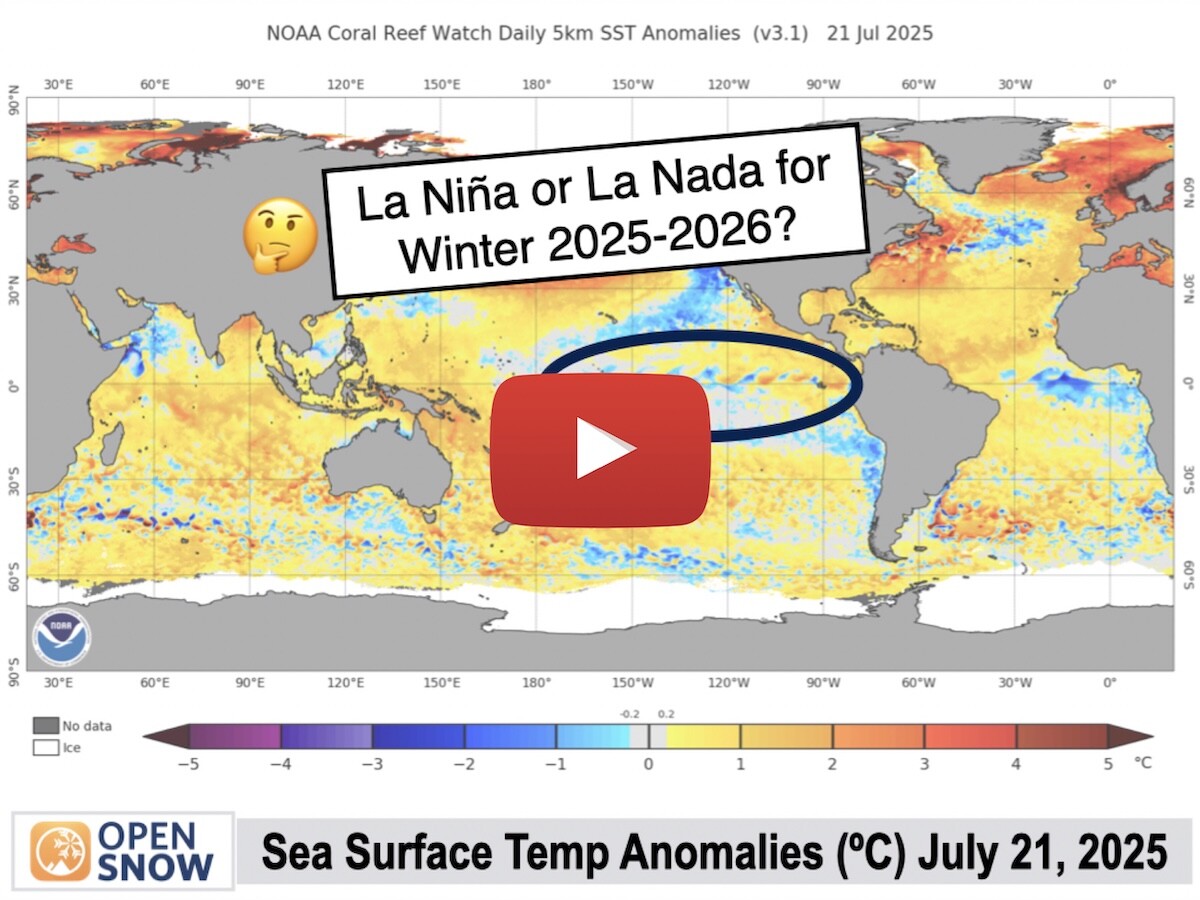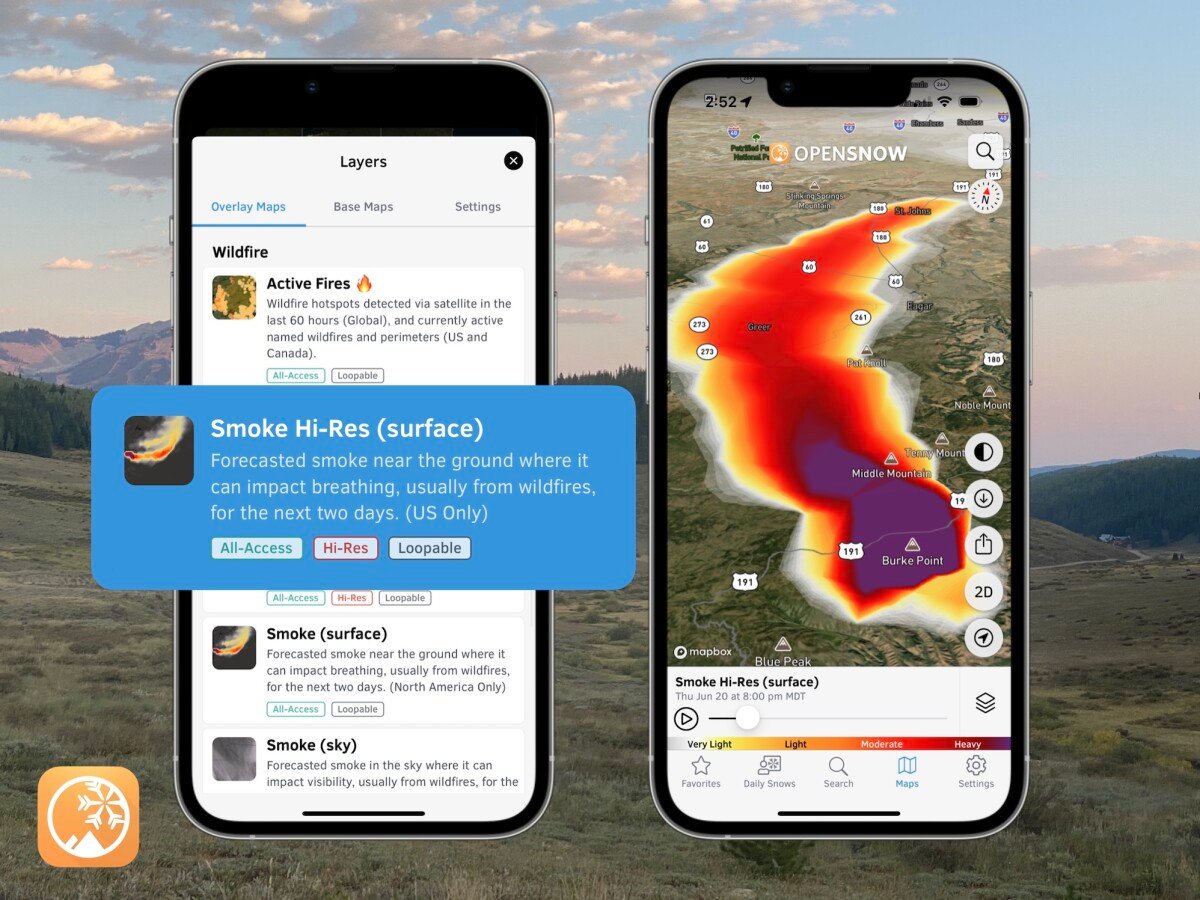Western US Daily Snow

By Alan Smith, Meteorologist Posted 2 years ago July 29, 2022
Stormy pattern with heavy rainfall continues across the Southwest
Summary
It has been an active week across the Southwest with heavy rain & flash flooding across Arizona, Utah, and Colorado. The monsoon will continue in its peak form through the weekend with additional t-storms and heavy rain across the Southwest, while the Sierra will also get in on the action Sun-Mon. Next week, a surge of monsoon moisture will likely reach parts of the PNW & Northern Rockies.
Short Term Forecast
Forecast Highlights:
- Daily rounds of thunderstorms with heavy rain and flash flood potential will persist across the Southwest and Southern Rockies including Colorado through the weekend.
- Thunderstorm activity increases across the Sierra on Sunday and Monday with locally heavy rains possible.
- Heat wave continues across the Pacific Northwest and Northern California through Sunday, before cooling off early next week.
- Hazy conditions at times across the West through the weekend due to fires in California and Idaho, but widespread heavy smoke is not expected at this time.
- Possible surge of monsoonal moisture into the Pacific Northwest and Northern Rockies next week with the potential for more widespread thunderstorms with wetting rains.
Synopsis:
A tall ridge of high pressure remains parked over the Northwest where hotter than average temperatures will persist, while an elongated ridge of high pressure is also located further east over Texas. In between these two high pressure areas, abundant monsoonal moisture with weak steering winds aloft will continue to result in widespread slow-moving thunderstorms with heavy rain across the Southwest.

Monsoon Update:
The past week has featured an intense monsoon with well-above-average moisture levels, resulting in widespread thunderstorms with heavy rain and flash flooding across Arizona, Southern Utah, and Colorado. The Front Range of Colorado has also been hit with severe thunderstorms in recent days including large hail.
An active pattern will remain in place on Friday with slow-moving thunderstorms capable of heavy rain and flash flooding across Arizona, Utah, Colorado, and New Mexico.
Monsoonal moisture has also worked its way into Eastern Idaho and Western Wyoming where thunderstorms are likely on Friday, favoring the Wind River Range especially. Isolated thunderstorms can also be expected further north in Montana where a disturbance will be moving through.
Moisture levels will be slightly elevated across California, but stable air under the high pressure dome will limit thunderstorm potential.

Similar to previous days, an elevated threat of flash flooding can be expected again on Friday across the Southwest and Southern Rockies. Burn scars, slot canyons, dry washes, steep/rocky terrain, and previously rain-saturated areas will be the most susceptible to flash flooding.

Saturday's pattern will be similar to that of Friday's, but we will see some subtle shifts on Sunday as high pressure migrates from California into Northern Nevada, and monsoonal moisture works its way westward into California, resulting in an uptick in thunderstorm activity across the Sierra.
We will also see a drying trend across the Northern Rockies as well as Northern Utah on Sunday as a more stable airmass takes hold, while moisture levels and instability will remain high across the Southwest and Southern Rockies.

Here is the 3-day rainfall outlook via the European weather model from Friday through Sunday.

Lightning Outlook:
Lightning activity can be expected throughout the Rockies on Friday afternoon, but will be most intense across the southern ranges and desert areas of New Mexico, Arizona, Utah, and Southern Nevada.

Lightning activity will become more isolated across the Northern Rockies on Saturday, while the Southern Rockies and Southwest will remain in an active thunderstorm pattern with Arizona and Utah expected to see the most intense lightning.

On Sunday, Montana, Wyoming, and Northern Utah should be storm-free, while Colorado, Southern Utah, New Mexico, and Arizona will remain in an active thunderstorm pattern. Storm activity will also extend westward into the Sierra Nevada Range and SoCal Mountains, while the Oregon Cascades could also see some "dry" thunderstorms with active lightning but little rainfall.

Temperature Outlook:
A heatwave will continue across the Pacific Northwest and Northern California from Friday through Sunday with little relief expected from previous days. Meanwhile, an abundance of moisture will keep temperatures running lower than average across the Southwest as well as Colorado.

High pressure over the West Coast will finally break down early next week, signaling the end of the heatwave as much cooler marine air works its way into the Northwest and California with near to below average temperatures expected by Tuesday. Meanwhile, areas east of the Continental Divide will see a transition to well-above-average temperatures.

Fire and Smoke Outlook:
The Oak Fire in California has slowed down a bit over the past couple of days, and smoke transport has been reduced as a result. The Moose Fire in Idaho continues to grow at moderate rates and is producing heavier smoke across portions of Eastern Idaho and Southwest Montana.
Otherwise, general "haziness" from these fires can be expected across much of the West through the weekend, but widespread heavy smoke with poor air quality is not expected at this time, except for localized areas near the fires. There is also a fire in British Columbia that is contributing to light smoke across the Pacific Northwest.

In terms of fire danger due to weather conditions, the greatest concerns will be across the Sierra, Great Basin, and Inland Northwest from Friday through Sunday due to hotter than average temperatures, before a welcome cooldown occurs early next week.
There will also be a threat of dry thunderstorms and lightning-triggered fires across Oregon on Sunday and to a lesser extent California where a mix of wet and dry thunderstorms is expected. By early next week, the dry thunderstorm threat should decrease as moisture increases.
Extended Forecast
Outlook for Monday (8/1) to Thursday (8/4):
Next week's pattern is looking interesting as a trough of low pressure is projected to take hold across the Pacific Northwest, which will help to transport an abundance of monsoonal moisture into portions of the Northwest and Northern Rockies.
Confidence is low regarding the timing and position of the trough (and we may even end up with back-to-back troughs) and when and where thunderstorms and showers will occur. However, the amount of moisture streaming into the Northwest and Northern Rockies along with energy from the trough could result in an active period of thunderstorms across these regions with widespread wetting rains also possible for some areas.

Further south, a typical monsoon pattern will continue across the Southwest and Southern Rockies with daily rounds of thunderstorms along with isolated flash flooding in vulnerable areas. However, the coverage and intensity of thunderstorms and rainfall should be lower compared to the current week at least.
Outlook for Friday (8/5) to Friday (8/12):
The core monsoon region around the Four Corners will continue to see below-average temperatures during this period. The rest of the West will be favored for above-average temperatures, except for Washington where temperatures should be near average.

Also, the monsoon is showing no signs of weakening with wetter-than-average conditions expected to persist across the Four Corners region. Monsoonal moisture is projected to work its way into California and parts of the Northern Rockies during this period as well.

Thanks so much for reading and have a great weekend! Next update on Monday (8/1).
ALAN SMITH
About Our Forecaster




